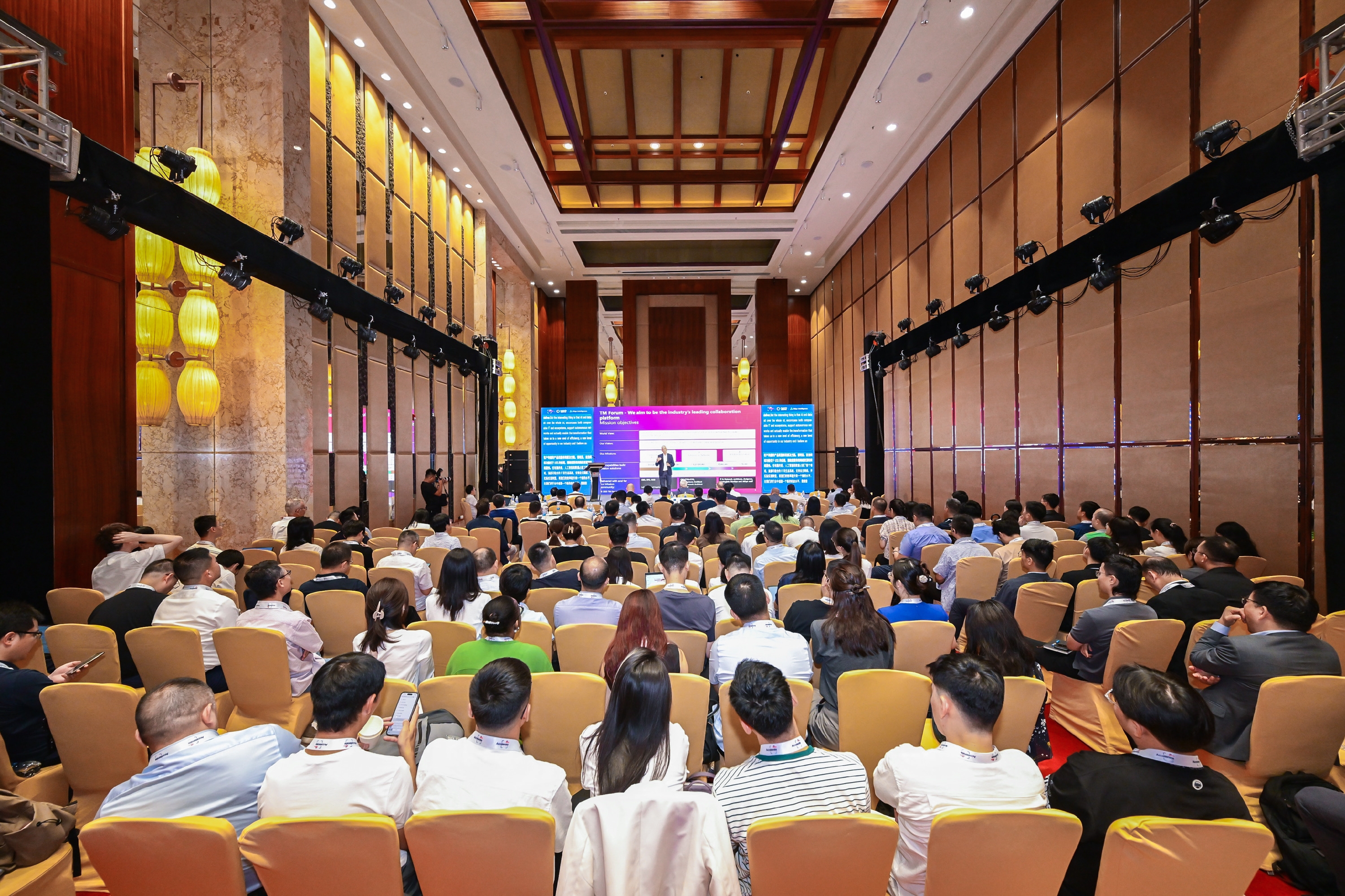ZTE reports 14.5% YoY revenue growth in H1 2025
- ZTE reported revenue of RMB 71.55 billion for first half year of 2025, representing 14.5% YoY growth, as its "Connectivity + Computing" strategy continues to deliver tangible results
- The second-curve business revenue, represented by computing power and terminal devices, grew nearly 100% YoY
- ZTE advanced its "All in AI, AI for All" strategy to accelerate innovation through AI-ICT integration
Shenzhen, China, 28 August 2025 – ZTE Corporation (0763.HK / 000063.SZ), a global leading provider of integrated information and communication technology solutions, today announced its financial results for the first half of 2025. The company reported revenue of RMB 71.55 billion for the period, representing a year-on-year growth of 14.5%.
According to ZTE's results announcement today, in H1 2025, the net profit attributable to holders of ordinary shares of the listed company reached RMB 5.06 billion. The net profit after extraordinary items attributable to holders of ordinary shares of the listed company for the same period was RMB 4.10 billion.
All in AI: accelerating AI-ICT integrated innovation
In the first half of 2025, amid the trillion-scale market opportunities from AI technology transformation, ZTE advanced its "All in AI, AI for All" strategy to accelerate innovation through AI-ICT integration. The company capitalized on AI-driven opportunities across network infrastructure, computing infrastructure, industry applications and terminals.
While consolidating its core network business with domestic operators and gaining international market share, ZTE further broadened deployments to meet rising demand for computing power and accelerated upgrades of its AI-powered terminals, contributing to faster revenue growth.
In Q2, both revenue and net profit attributable to holders of ordinary shares of the listed company showed growth from Q1. Revenue from the company's second-curve business, represented by computing power and terminal devices, increased nearly 100% year-on-year, accounting for over 35% of total revenue. The company's solid execution of its "Connectivity + Computing" strategy continues to deliver tangible results.
During the reporting period, ZTE's R&D expenses totaled RMB 12.66 billion, accounting for approximately 18% of operating revenue. The company filed approximately 94,000 global patent applications, with over 50,000 patents granted worldwide. In the field of AI, it has filed nearly 5,500 patent applications, with almost half already granted. In the semiconductor sector, the company has filed approximately 5,700 patent applications, with more than 3,700 patents granted to date.
Government & enterprise, and consumer businesses continue to grow, with their revenue share exceeding 50%
In the first half, ZTE recorded revenue of RMB 50.62 billion from the domestic market and RMB 20.93 billion from international markets, representing 70.7% and 29.3% of total, up 17.5% and 7.8% year-on-year, respectively. By segment, operator networks, government & enterprise, and consumer businesses reported revenues of RMB 35.06 billion, RMB 19.25 billion, and RMB 17.24 billion. The combined revenue contribution of the government & enterprise, and consumer businesses rose to over 50% of total revenue. As AI infrastructure deployment accelerates, the company's revenue mix has shifted, while growth in the government & enterprise, and consumer businesses has also placed phased pressure on the gross margin.

In operator networks segment, ZTE mitigated the impact of domestic 5G capex slowdown, continued to consolidate its core operator business base, and achieved steady gains in market share for key products. The company also expanded intelligent computing initiatives and deepened its focus on future-oriented technologies, including 5G-Advanced and 10-Gigabit access. As a result, the year-on-year revenue decline in the operator networks segment narrowed in the first half.
In the government & enterprise business, ZTE capitalized on rising intelligent computing investment to deliver 109.9% year-on-year revenue growth, establishing this segment as the company's primary growth engine.
Domestically, the company leveraged increased intelligent computing capex by leading internet and industry players to scale partnerships.
Internationally, it captured opportunities from the accelerated built-out of computing infrastructure, including data centers, servers and related systems, in major overseas markets, deepening collaboration with Chinese enterprises going global, and with local clients.
In the consumer segment, ZTE has accelerated the deployment of a full-scenario smart ecosystem through a forward-looking, full-range portfolio of AI-enabled devices. During the first half, synergized growth across home terminals, smartphones, cloud PCs, and mobile internet products drove year-on-year revenue growth of 7.6% for the segment.
The company adopted a "ZTE + nubia" dual-brand strategy, focusing on expanding open-channel markets in key regions including Southeast Asia, Latin America, the Middle East, Africa, and Europe. Alongside these efforts, its gaming terminal brand "Red Magic" has not only strengthened its presence domestically but also intensified efforts in overseas e-commerce platforms. As a result, the international revenue of its smartphone business grew by over 30% year-on-year, while its cloud PCs continued to demonstrate strong growth momentum.
"Connectivity + Computing" strategy upgrade to advance AI for All
On the connectivity front, ZTE continued to strengthen its core competitiveness across wireless and wired products. According to the latest research reports, the company's shipments of 5G base stations and 5G core networks ranked No. 2 globally, and its RAN, 5G core network, optical access and optical transport products were rated industry leaders by major research institutions.
In wireless networks, the company leveraged 5G-Advanced to unlock new business models such as the low-altitude economy, 10-Gigabit experiences and deterministic services, while continuing to drive the evolution toward 6G.

In wired networks, the company provided key network capabilities through all-optical networks—ultra-high bandwidth, low latency and high reliability—thereby reinforcing the connectivity foundation that underpins intelligent upgrades across industries.
In computing infrastructure, ZTE captured opportunities arising from large AI models by enhancing R&D and ecosystem collaboration in intelligent computing solutions. The company provided full-stack intelligent computing products spanning chips, intelligent computing servers, hyperscale clusters and AiCube all-in-one machine, complemented by software solutions, including resource management systems, training and inference platform, Nebula foundation model, and AI agent factory.
This integrated hardware-software approach has established an open and accessible intelligent computing infrastructure, which is capable of addressing diverse AI application scenarios by providing end-to-end, full-stack and full-scenario intelligent computing solutions. To date, ZTE's solutions have been implemented in over 18 vertical industries with more than 100 deployments serving as industry benchmarks.

In the terminal field, ZTE advanced on-device AI applications and strengthening deployment across personal and home scenarios.
For individual consumers, it broadened and deepened AI applications across its entire terminal ecosystems including smartphones, PCs, tablets, mobile internet products and wearables to accelerate AI democratization. In the first half, it launched multiple innovative AI-powered devices, including nubia Z70S Ultra Photographer Edition flagship, the compact and affordable nubia Flip 2, its first consumer-grade tablet—nubia Pad Pro, and new Neo-series gaming smartphones, to serve diverse youth demand.
It also introduced a lineup of AI-powered cloud PCs, delivering premium smart display experiences for users.
For home scenarios, ZTE focused on four key AI-powered solutions—AI home network, AI home computing, AI smart screen, and AI home robot, to build a full-scenario AI ecosystem that drives smart home upgrades.
Amid a new wave of technological and industrial transformation, ZTE is committed to its vision "To lead in connectivity and intelligent computing", continuing to advance the integration of AI with ICT. Adhering to the principles of extensive collaboration and open cooperation for mutual benefit, ZTE, together with its partners, aims to empower the real economy, and promote computing and AI for all, contributing to global digital and intelligent transformation.




